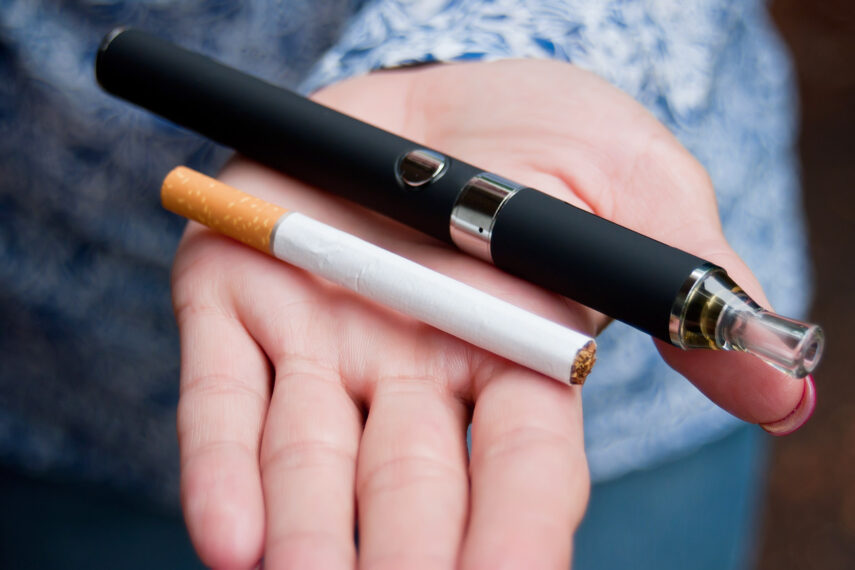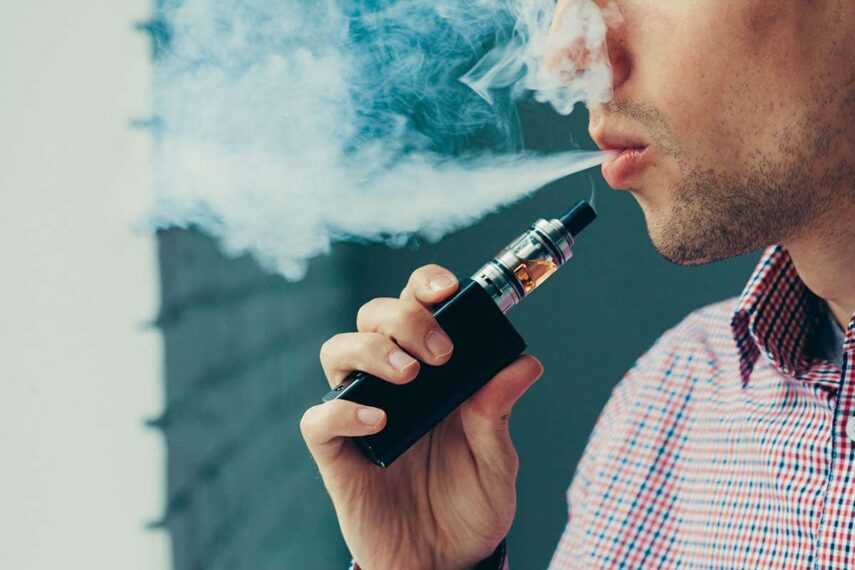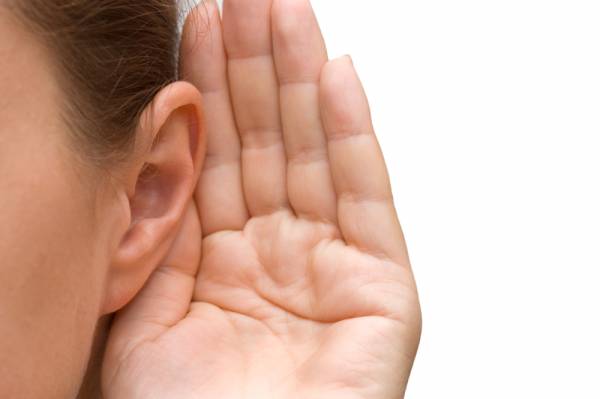It was back in 2017 when an intriguing survey discovered that nearly 10 million Americans identified as regular vapers. That number has seen a significant surge, with the allure of e-cigarettes drawing more former smokers into its fold.
This transformation from traditional smoking to vaping comes with its set of queries, predominantly, “How much should I vape?”. Unlike traditional smoking, vaping doesn’t have a universally recognized metric.
The Basics of Vaping
Over the past decade, the vaping scene has not just grown; it has evolved. Initially designed as a bridge for smokers wanting to quit, this activity has morphed into its own massive subculture. At its core, a standard vape device encompasses a battery, an atomizer or coil, responsible for the heating, and a tank that holds the flavorful e-liquid.
Upon activation, the e-liquid is heated into a vapor, offering users a myriad of sensory experiences. Speaking of e-liquids, the market is saturated with a vast range of flavors, capturing the essence of everything from the robustness of tobacco to the delicate notes of fruits and desserts.
Health Considerations
While vaping does wear the badge of being a healthier alternative to traditional cigarettes, it’s not devoid of potential health ramifications. A series of scientific studies have hinted at possible respiratory and cardiovascular consequences stemming from the consistent consumption of vape products.
However, a silver lining remains. This activity eliminates many of the noxious carcinogens that cigarettes are infamously known for. But with every cloud (or vape cloud) comes a caveat. Moderation is essential.
Excessive vaping, especially with high nicotine e-liquids, can usher in nicotine toxicity, which manifests symptoms like nausea, palpitations, and dizziness.
Individual Factors
Vaping, in its essence, is a highly personalized experience. Frequency varies dramatically among users. Some might take a few puffs occasionally, while others might find solace in regular sessions throughout the day. Several dynamics influence this frequency – nicotine tolerance, ingrained habits from smoking days, specific personal preferences, and overarching health objectives.
Consider an ex-smoker who was accustomed to a pack-a-day habit; they might gravitate towards e-liquids with higher nicotine strengths than someone who vapes purely for flavor. It’s crucial to be attuned to your body, recognizing its signals and subtly tweaking your regular patterns to align with your comfort and needs.
For less worries, you should always use products from DashVapes and similar outlets that are of high quality.
Nicotine Levels

Nicotine – a name that has been synonymous with traditional cigarettes, finds its place in the vaping world as well. Its presence in e-liquids is significant for a multitude of reasons. For starters, it’s the primary agent responsible for the ‘hit’ many smokers and vapers chase.
Its effects on the body are profound; from inducing relaxation to elevating alertness. However, moderation is key. High concentrations of nicotine can lead to an overstimulated nervous system, resulting in symptoms that are far from pleasant.
For this reason, it’s imperative for vapers, especially newbies, to be discerning in their choice of nicotine strength.
Vaping Frequency for Beginners
Embarking on the vaping journey can be both exhilarating and overwhelming. Newcomers are often bombarded with a plethora of choices, from devices to e-liquids. The initial frequency of this activity is an aspect that often gets overshadowed.
For beginners, it’s not just about how often but also about how intense. The recommendation is almost unanimous: start slow. The transition from not inhaling any vapor to doing so can be quite a shift for the body. Overenthusiastic beginnings can sometimes lead to mild headaches or dizziness.
Transitioning from Smoking to Vaping

For numerous individuals, vaping serves as the bridge away from the harmful clutches of traditional cigarettes. However, this transition is not always linear. The tactile sensations, the nicotine delivery, and even the ritual of smoking have been ingrained in them. Vaping, while similar, is a different beast altogether.
Those moving from smoking to this activity often wonder about the equivalence — how many vaping sessions equate to a single cigarette? The answer is nuanced, depending on the nicotine strength of the e-liquid and the vaping device’s efficiency. Narratives from ex-smokers have varied, but many find that this activity offers a smoother, more customizable nicotine delivery method.
Finding Your Balance
The “sweet spot” in vaping is an elusive concept, often varying dramatically between individuals. It’s that perfect intersection where satisfaction meets safety. The journey to discover this balance involves a combination of self-awareness and experimentation.
Recognizing that vaping experiences aren’t universally uniform is the first step. Some might find their equilibrium with this activity sparingly throughout the week, while others might need multiple sessions daily. Factors like device type, e-liquid composition, personal health goals, and even the psychosocial aspects of it play a role.
Potential Pitfalls
Like any other habit or hobby, vaping is not immune to pitfalls. One of the most common missteps is over-vaping, especially when one is new to the experience or using high-powered devices.
Overconsumption can lead to “vaper’s tongue,” where individuals temporarily lose the ability to taste e-liquid flavors. Additionally, chain vaping can lead to dehydration, owing to the hygroscopic nature of e-liquids. The risks of excessive consumption of vape products don’t end there; potential side effects can range from dizziness to more pronounced nicotine side effects.
Listening to Your Body

Arguably, the most astute vaping advisor one can have is one’s own body. It constantly offers feedback. Feeling lightheaded after a vaping session? Perhaps the nicotine strength is too high or the frequency too intense.
Experiencing a dry mouth or a persistent cough? It could be a sign to reduce the frequency, switch e-liquids, or consult a professional. Regular self-check-ins are pivotal. Monitoring bodily responses post-vaping can guide adjustments, ensuring an optimal and harmonious vaping experience.
Professional Advice
While personal research and experiences are invaluable, there’s undeniable merit in seeking professional insights, especially when faced with persistent issues or when considering vaping as a smoking cessation tool.
Healthcare professionals, especially those familiar with vaping, can offer guidance tailored to individual health profiles. Beyond medical professionals, vape specialists in reputable vape shops can also provide insights into device mechanics, e-liquid compositions, and safe practices. In an age of information overload, discerning trustworthy sources is vital.
Conclusion and Recap
Vaping, a cultural phenomenon of the modern age, offers a kaleidoscope of experiences. From the basics of devices and e-liquids to the nuanced dance of finding the perfect balance, the journey is as unique as the individual embarking on it.
Prioritizing health, being attuned to one’s body, and not hesitating to seek professional advice are the pillars of a rewarding vaping journey. As you explore or continue your vaping adventures, may you always find that “sweet spot” that aligns with both pleasure and well-being.







